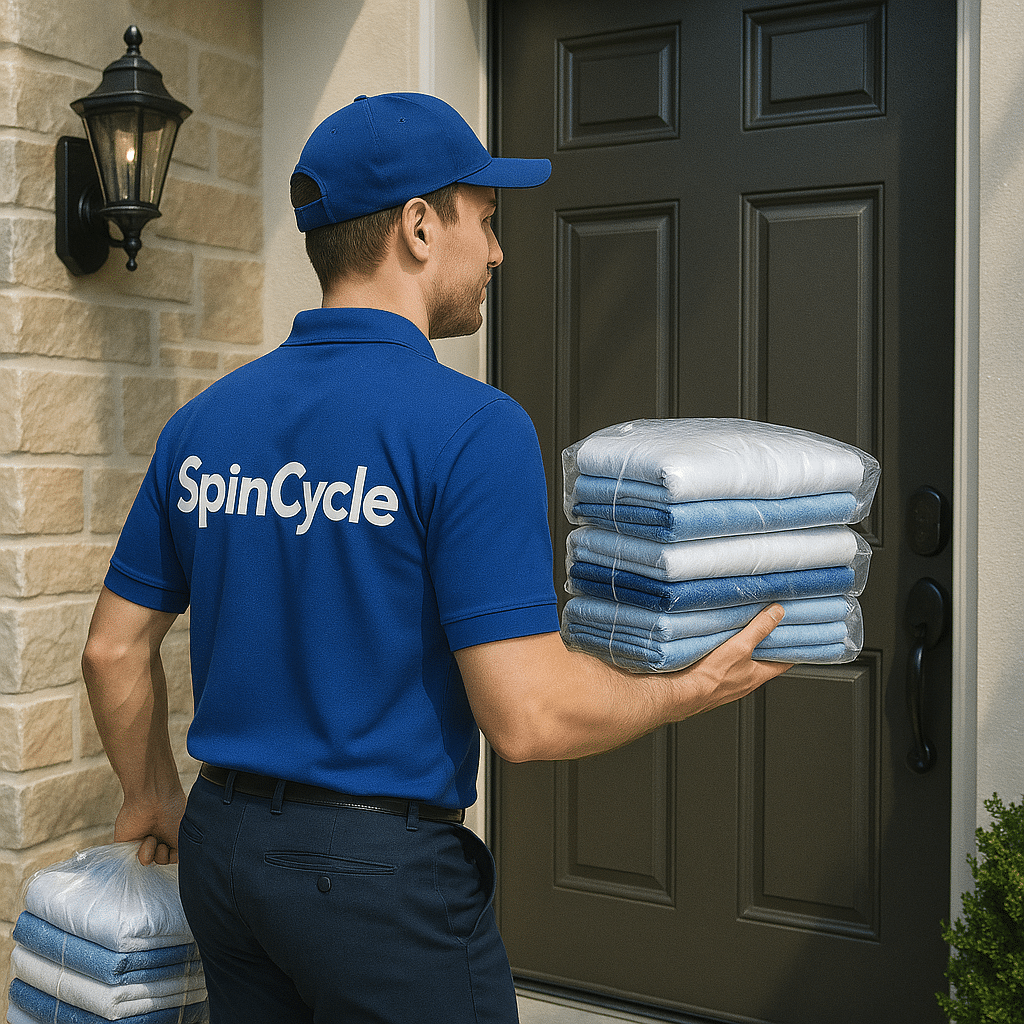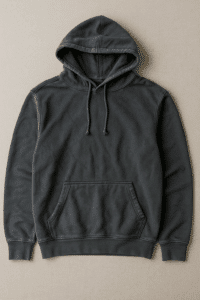How to Shrink Clothes in the Washing Machine
Ever wondered how to shrink clothes in the washing machine without ruining them? You’re not alone. Whether you’re trying to size down a baggy hand-me-down, restore the fit of an over-stretched shirt, or just get that perfect snug feel, shrinking clothes at home is possible with the right techniques. This practical guide will walk you through exactly how to shrink clothes for a better fit – while avoiding common laundry pitfalls. Let’s dive in, neighbor, and shrink smart!

Shrinking Cotton Clothes (100% Cotton)
Cotton fabrics are the easiest to shrink. If you have a 100% cotton T-shirt, pants, or dress that’s too big, a little heat and water will usually do the trick. Here’s how to shrink 100% cotton garments safely:
- Hot wash: Wash the cotton item in the hottest water setting your washer allows (check the care label to be sure hot water won’t damage any colors or prints). The heat and moisture cause cotton fibers to swell and contract.
- High-heat drying: Immediately transfer the item to the dryer and dry it on the highest heat setting. Yes, hot water does shrink clothes – and the hot dryer is what really “locks in” the shrinkage for cotton.
- Check progress: Stop the dryer periodically (every 5-10 minutes) to check the fit. Cotton can shrink quickly, especially if it wasn’t pre-shrunk. Once it looks close to the right size, switch to a low heat or air dry setting to finish drying without more shrinkage.
Most modern cotton garments are pre-shrunk, meaning they won’t shrink drastically. You might get a small reduction (perhaps one size down) after one or two hot wash/dry cycles. Keep in mind that cotton tends to shrink mostly in length (think shorter sleeves or pant legs) and a bit in width. If your shirt or pants are still too roomy, you can repeat the process, but don’t expect miracles – going from XXL to medium is unlikely. Also, make sure the item is clean before shrinking; heat can set stains. (If you’re battling a tough spot, see our stain removal guide first so you don’t end up with a shrunken shirt and a permanent stain.)
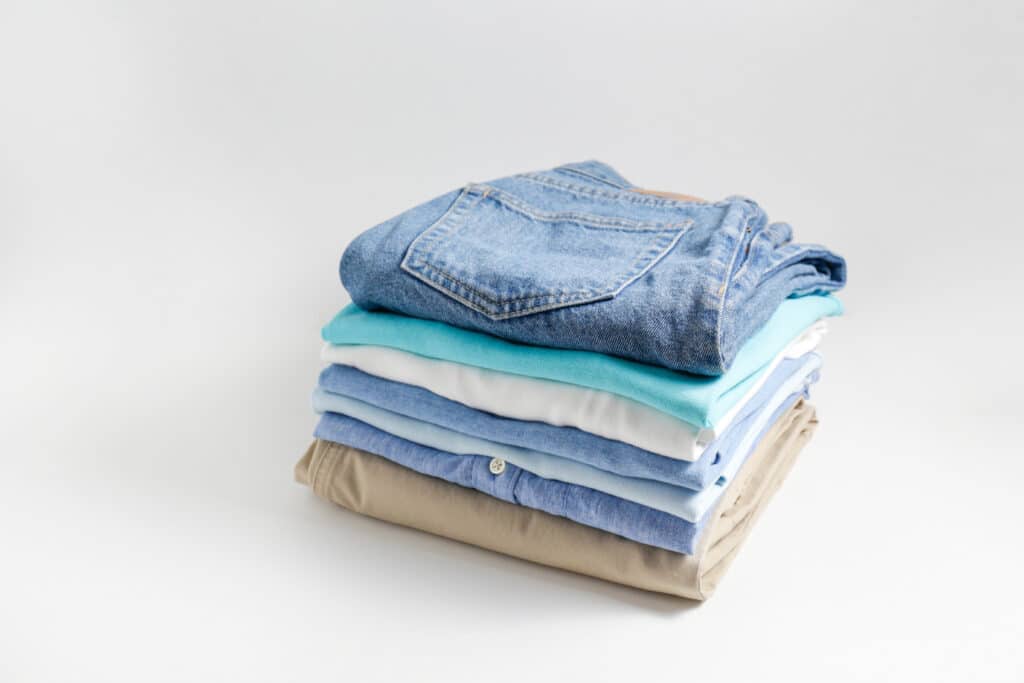
Shrinking Denim (Jeans and Pants)
Got a pair of jeans or pants that are a size too large? Good news: denim, which is usually cotton or a cotton blend, will shrink similar to other cotton clothes. How to shrink pants or jeans for a better fit:
- Wash on hot: Turn your jeans inside out (to protect color) and wash in hot water. This will start the shrinking process. Denim is thick, so a longer wash cycle with plenty of agitation helps the fibers contract.
- Tumble dry high: Transfer immediately to the dryer on high heat. Can clothes shrink in the dryer? Absolutely – the heat from a dryer is denim’s best friend when you want to shrink it. Let the jeans dry completely on high heat. The combination of hot water and a hot dryer can tighten up that waistband and pant legs noticeably.
- Check and repeat if needed: As with cotton shirts, check your jeans periodically. Once fully dry, try them on. If they need more shrinkage, you can repeat another hot wash and dry. (Pro tip: if they’re still just a smidge loose in certain areas, see the spot-shrinking section below for a targeted fix.)
Keep in mind that frequent hot washing and drying can fade denim and make the fabric wear out faster. It’s a trade-off – you get the shrink, but your denim might not last as long if you do this regularly. Some denim aficionados even use creative tricks like boiling jeans in a pot of water or taking a hot bath while wearing the jeans (a quirky but effective raw denim technique!). For most of us, though, a simple washer-and-dryer combo will do. Just remember to avoid shrinking jeans that have embellishments or special finishes that could be damaged by heat. And if your pants are a synthetic blend (like stretch leggings or poly-blend dress pants), read on – those might need a different approach.
Shrinking Wool (Sweaters and Delicates)
Shrinking a wool sweater or any wool garment can be tricky – wool loves to shrink, often more than you expect. (Hello, tiny sweater that used to fit perfectly!) How to shrink a sweater or other wool item safely:
- Warm (not hot) wash or soak: If the sweater is machine-washable, use a gentle cycle with warm water. Avoid the agitation of a heavy cycle, which can felt the wool (matting the fibers). Alternatively, you can hand wash or soak the sweater in warm water in a basin. A small amount of gentle detergent or even hair conditioner can help the fibers relax initially.
- Heat + agitation (carefully): Wool can shrink a lot with just heat and motion. If you need significant shrinkage, you can put the damp sweater in the dryer on low heat for very short intervals. Check it every few minutes! This is where you must babysit – wool can go from fitting to child-size rapidly. If you’re nervous about the dryer, another method is to lay the wet sweater flat on a drying rack in a warm room; it will still shrink some without the tumbler, albeit more slowly and evenly.
- Lay flat to finish: Once the sweater is slightly shrunken to your liking, immediately take it out while still a bit damp. Gently tug and shape it (wool is malleable when wet) to the dimensions you want, then lay it flat to air dry the rest of the way. Laying flat prevents the weight of water from stretching it out again and avoids distortion.
Be extra cautious with wool – a little shrink goes a long way. It’s often better to sneak up on the right size through multiple small shrink attempts than to overshoot in one go. If you accidentally shrink your wool sweater too much, there are some folklore fixes: for example, soaking it in lukewarm water with a bit of conditioner or fabric softener, then gently stretching it back. Results vary, but it’s worth a try before you declare the sweater doll-sized forever. And of course, if the wool item says “dry clean only,” it’s best not to experiment at home. Wool fibers are animal hair and they interlock under heat/agitation (that’s how felt is made), so consider yourself warned – shrink responsibly!
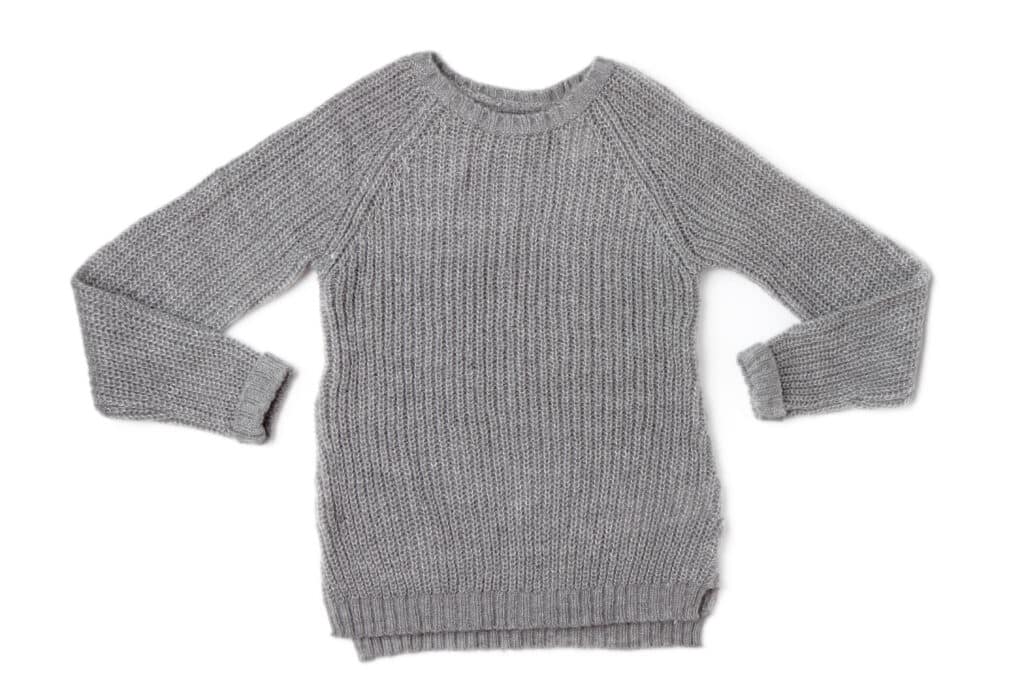
Shrinking Synthetic Fabrics (Polyester, Nylon, etc.)
What about polyester, acrylic, and other synthetic materials? These are made from plastics, so they are much more heat-resistant and don’t shrink easily. In fact, 100% polyester can usually survive hot washes and high dryer temps with little to no size change – it’s designed to hold its shape. That said, how to shrink a dress or shirt that’s polyester or a poly-blend? You can try, but manage your expectations and be careful:
- Use high heat: Wash the garment in hot water and then dry it on the highest heat. Sometimes, this will coax a slight shrink out of polyester or nylon. You might need to run it through a couple of cycles.
- Iron with steam: If the washing machine and dryer aren’t doing much, try ironing the garment on a high setting (if the care label says it’s safe to iron). Use a pressing cloth and steam and go over the whole item. The combination of direct heat and steam can tighten synthetic fibers a bit. **Always be careful** – too hot and you could melt or scorch the fabric. Ironing is at-your-own-risk for plastics!
- Spot shrink with caution: For something like a loose polyester dress, you might spritz a specific area with water and use a hot hair dryer on it (or an iron) to attempt a minor shrink in just that spot. Synthetics are stubborn, though, so this works only subtly if at all.
Overall, don’t expect major size changes from pure synthetics. A polyester blouse or athletic jersey might tighten up a tiny bit with heat, but you’re more likely to damage the item before you get a dramatic shrink. Blends (e.g. 50% cotton, 50% polyester) will shrink according to the amount of natural fiber in them – a cotton/poly blend will shrink some, but not as much as 100% cotton. If you truly need a synthetic piece smaller, consider a tailor for alterations. Otherwise, using the hottest safe settings is your best shot. Just remember to follow the care instructions to avoid wrecking the fabric’s texture or color in the attempt.
Washing Machine vs. Dryer: What’s the Best Way to Shrink?
You might be wondering, is it the washer or the dryer that does the shrinking? The answer: both, as a team. The general formula for shrinking most clothes is heat + moisture + agitation. The washing machine provides the moisture (and some agitation), and the dryer usually provides more heat (and tumbling agitation plus the final drying that “sets” the smaller size). Here’s how to think about it:
- Washing Machine: Warm or hot water causes natural fibers to swell and then contract as they cool and dry. The agitation of the wash cycle helps fibers lock into a new, tighter position. However, a washer alone, especially if you air dry afterward, might only shrink clothes so much. (One exception: wool – even a warm hand-wash can lead to noticeable shrinkage as the fibers mesh together.) If you’re cautious, you can try shrinking with a hot wash and then air drying first to see the effect, since some fabrics will already shrink from the wash itself. If it’s still not enough, move to the dryer.
- Dryer: The dryer is the heavyweight champ of shrinkage. High heat in the dryer evaporates water quickly and forces fibers to bond closer together. Tumbling adds mechanical action that can further draw up the fabric. In fact, laundry experts at Whirlpool note that high dryer temperatures are very likely to shrink susceptible fabrics. So if you want maximum shrinkage, use both a hot wash and a hot dry. If you want to be gentler (to avoid overshrinking), you might use a warm wash and a medium-heat dry, or even just one of the two.
Does hot water shrink clothes on its own? Hot water can start the process (especially for cotton, wool, or rayon), but often it’s the drying phase that completes it. On the flip side, can clothes shrink in the dryer without washing first? A little, yes. If you have a slightly damp garment (you could mist it with water) and throw it in a hot dryer, it may shrink a bit just from the heat. This is a quick hack if you don’t want to do a full wash – for example, to tighten jeans that have stretched out after a couple wears, spritz them with water and toss in the dryer for 15 minutes. Just be aware this works best with natural fibers; your polyester gym shorts won’t budge much.
Spot-Shrinking for a Perfect Fit
Sometimes you don’t want to shrink the whole garment – just certain areas. Maybe the waist of your pants is loose but the length and legs are fine. Or a sweater’s cuffs have stretched out, but the rest fits. Enter spot-shrinking techniques, your secret weapon for precision tweaks:
- Spray and heat: Lightly mist the area you want to shrink with clean water. Get it damp (not dripping). Then apply direct heat to that area. You can use a blow dryer set on high heat, or an iron on a high setting (with steam off). For example, to tighten a waistband, spray around the band, then iron it thoroughly until the fabric is dry and hopefully a bit tighter.
- Ironing trick: As denim experts at Levi’s recommend, a hot iron is great for small denim areas like the knees, seat, or waistband. After dampening the spot, run a very hot iron over it repeatedly. The heat will shrink that specific area more than the rest. Just avoid keeping the iron in one place too long (to prevent scorching).
- Hot water dip: For sleeves or pant legs, you can dip just that part of the garment in a basin of hot water, then dry it with high heat (hair dryer or iron). This way the targeted section shrinks without affecting the entire piece as much.
Spot-shrinking is an art, not a science. Always start conservatively – you can repeat a spot treatment if it’s still too loose, but you can’t easily reverse a section that got too tight. Also, note that spot-shrinking works best on heavier fabrics like denim or thick cotton. With something thin (like a blouse), you might get water rings or uneven texture, so test on an inconspicuous area first. And as always, be cautious with heat on delicate materials. When done right, these methods can save you a trip to the tailor by nipping and tucking just the areas that need it.
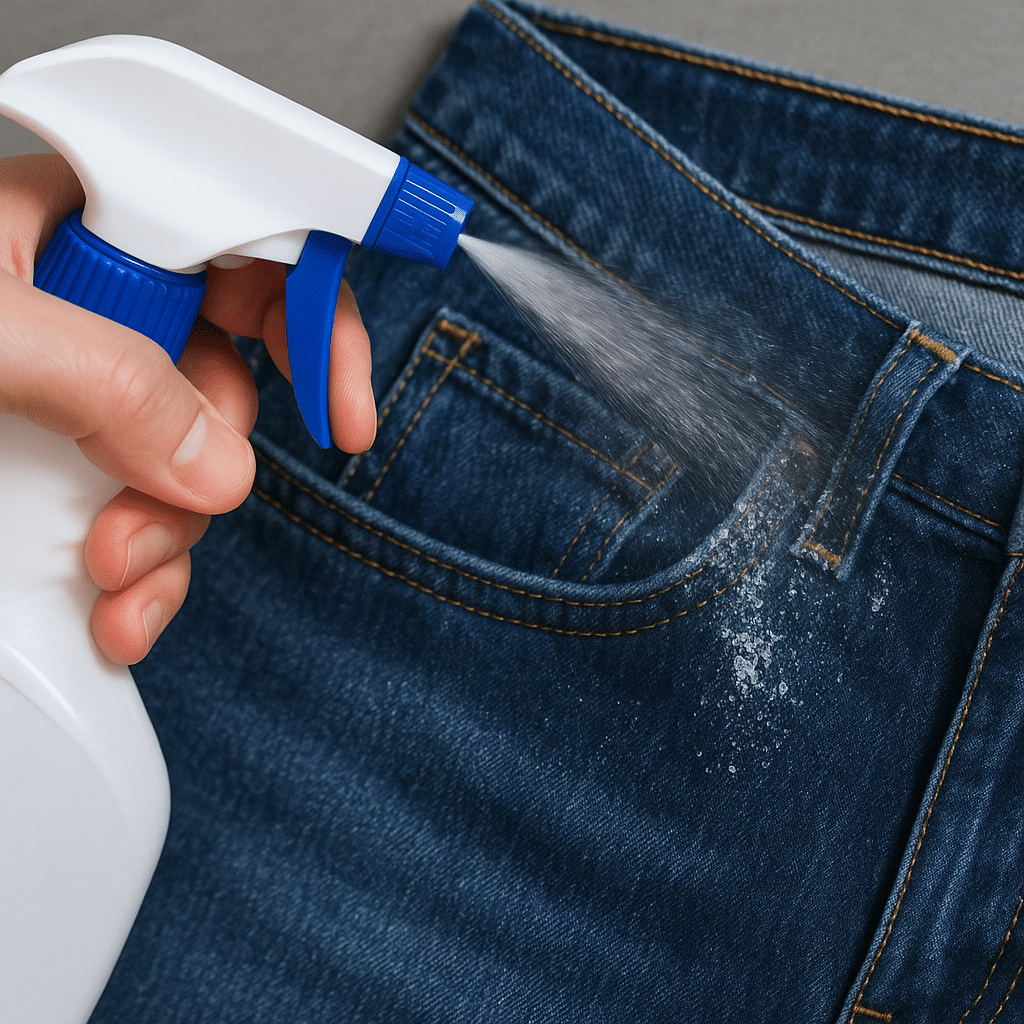
Common Mistakes to Avoid
Before you start intentionally shrinking everything in your closet, let’s cover a few common mistakes people make – so you can avoid them:
- Over-shrinking by accident: It’s easy to get carried away. If you toss a garment in a hot dryer and forget about it, you might pull out a kid-sized version of your shirt. Always check the item frequently during the process. You want to creep up on the perfect size, not blast past it.
- Ignoring care labels: The care label is your cheat sheet. If it says “pre-shrunk” or “preshrunk cotton,” temper your expectations – that item likely won’t shrink much further. If it says “dry clean only” (especially for suits, wool coats, silk dresses), do not attempt a DIY shrink; you could ruin it (think misshapen, felted, or discolored). Also check what the fabric actually is; many clothes look like cotton but might have synthetic blends that react differently to heat.
- Too much heat on the wrong fabric: Blasting a polyester or nylon garment with high heat can lead to melted fibers, nasty wrinkles, or a permanently warped shape – and still not much shrinkage. Likewise, throwing a wool sweater in a hot dryer for an hour will shrink it, yes, but likely into a felted mess you can’t wear. Match your method to the material, and when in doubt, use moderate heat over a longer time, checking often.
- Not cleaning first: We mentioned it earlier, but it’s worth repeating: always wash garments before you shrink them to remove any stains or odors. Shrinking will set anything on the fabric more deeply. (Heat is great at locking in what’s already there – dirt, smells, all of it.) If that favorite hoodie has a funky smell or a spill, treat that first. We have a handy guide on getting odors out of clothes that can help. Don’t shrink a dirty item – you’ll just end up with a smaller dirty item!
- Expecting miracles: Real talk – intentional shrinking can usually tweak a garment by maybe 5-15% in size. If something is dramatically too large for you, shrinking might not make it fit perfectly. It could also shrink unevenly (for instance, a shirt might get shorter but not much narrower). Know when to stop; it’s better to have a shirt that’s slightly loose than one with arms too short to wear. For big size differences, consider taking it to a tailor instead of relying on laundry tricks.
Avoiding these mistakes will save you from the classic blunders (and heartbreaks) of DIY shrinking. Take it slow, keep an eye on the progress, and remember that each fabric behaves differently. If you’re ever unsure, do a test with a less important garment to get a feel for it. You’ll gain confidence and be shrink-savvy in no time.
When to Let the Laundry Pros Handle It
After reading all this, you might be thinking, “This sounds like a lot of monitoring and careful timing…” – and you’d be right! Shrinking clothes at home requires patience and attention. If you’re short on time or nervous about getting it right, there’s no shame in calling in the pros. In fact, our team at Spincycle helps people with tricky laundry tasks every day.
For instance, you can use our convenient wash & fold service and let us know you have a garment you’d like a bit smaller – our clean-obsessed staff will take care to use the right settings. If you’re juggling a busy schedule, schedule a pickup and delivery; we’ll whisk your laundry away and return it fresh, clean, and if requested, slightly shrunken to perfection. Prefer doing things hands-on? Come by our self-service laundromat – you can use our commercial-grade washers and dryers, and our friendly attendants will happily offer shrink-session tips or keep an eye on that critical spin cycle with you.
The bottom line: You can shrink clothes in the washing machine (and dryer) for that just-right fit, as long as you match the method to the material and pay attention. From cotton tees to wool sweaters, a little knowledge goes a long way in avoiding laundry disasters and achieving a Goldilocks-perfect size. And if you ever feel in over your head, remember we’re here to help with any laundry challenge, big or small. Now go forth and downsize that wardrobe wisely. Happy laundering!
